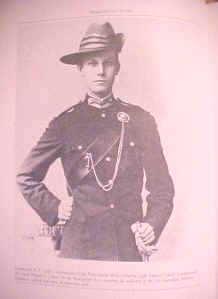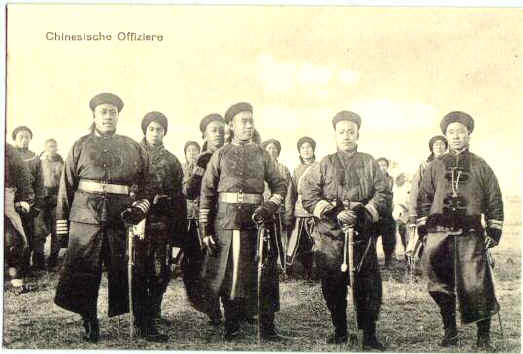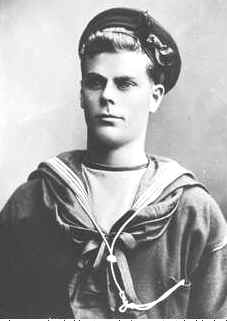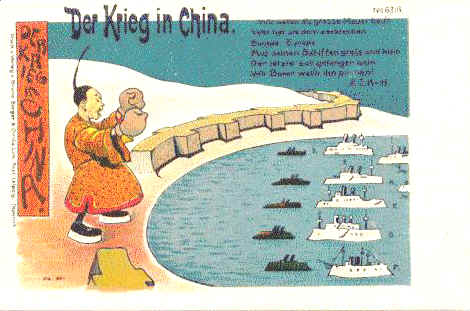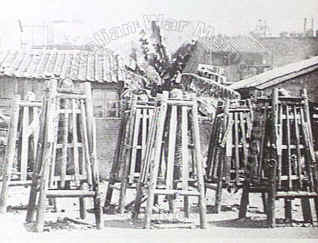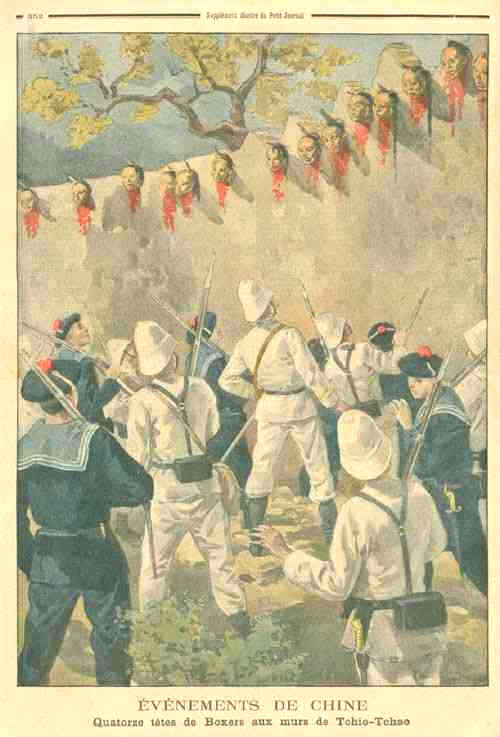 |
|
|||
|
|
||||
|
The Boxer Rebellion |
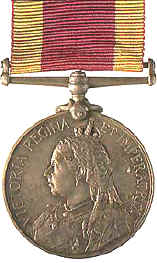 |
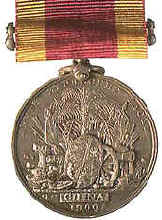
|
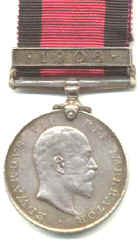 |
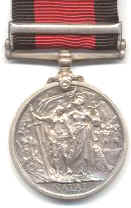 |
| Medal for service in the Boxer Rebellion of 1900. Approx 550 awarded to Australians. | Medal for service in the Natal rebellion of 1906. Issued to individual Australians but no Australian units were involved. |
|
|
Details of personnel serving in the Boxer Uprising, China, 1900-1901.
|
|
Boxer Rebellion Digger |
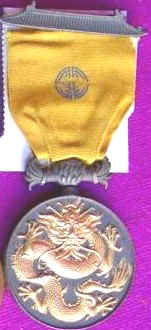 |
The Order of the Dragon China 1900 |
 |
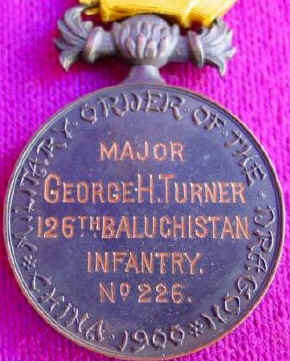 |
|
INVADING THE MIDDLE KINGDOM One of Australia's most unusual military expeditions occurred in 1900-1 when a task force was sent into China to help the British crush the Boxer Rebellion. The whole incident lasted less than a year and involved fewer than 1000 Australians, yet it was to have a distinct effect on the development of the Australian navy. Early in 1900 when the Boer War was at its height, news reached Australia of a terrible rebellion in China. Sickened by years of exploitation by various foreign powers, a large group of Chinese began efforts forcefully to expel all foreigners from the country. Leading this uprising was a party known as the 'Society of Righteous and Harmonious Fists' whose members became known to the Europeans as Boxers.
One of the first acts of the Boxers was attack various foreign embassies situated the imperial capital of Peking. The British French, German, American, Russian a Japanese ambassadors found themselves under siege and in a rare display of unity pooled their meagre resources until a relief party arrived. When they heard that their embassies we under attack, the respective foreign governments began to raise forces to go to their aid.
Storming Peking The New South Welshmen and Victorians arrived in China at the mouth of the Pei-Ho River on 9 September 1900. From there they marched to the key city of Tientsin which the Victorian brigade was left to garrison. Meanwhile the New South Wales brigade, integrated with other British forces, stormed into Peking to the sound of a pipe band on 20 October. Having relieved the foreign legations, the New South Wales unit remained = Peking for five months performing the 7win roles of fire brigade and police force. Armourer G. Prideaux, of the Victorian contingent, described the devastation the fighting had caused in Peking. Of the British Legation building he wrote: 'the place was considerably knocked about. A great wall surrounded all the buildings. The Legation people owe a lot of their safety to that. The bodies of those who fell and died are buried in a corner, some with no coffins, a cross and a name being all that mark the spot. One house was perfectly riddled by shell and spattered by bullet marks ... An iron bedstead in one of the rooms was completely wrecked and the upright bed posts of iron about 1 and a half inches in diameter were even riddled by rifle fire.'
Too Late to See Action September 1900, 300 men from both Contingents were sent to take part in the attack on the Pehtang forts 10 kilometres north of Tientsin. The Australians were keen to see action but by the time they arrived the position had been captured by an allied army. The Victorians were then detailed to attack the Boxer defences at Pao-ting-fu, which lay 130 kilometres away to the west. Once again, however, due to bad directions the Australians arrived too late to see any fighting. While the Victorians had been trying to come to grips with the enemy, the New South Welshmen had not been idle. In January 1901 they were dispatched to the Boxer stronghold of Kao-li-ying where they successfully collected a punitive fine and burnt down a temple. Finally on 26 and 27 March 1901 both contingents were sent back to Australia, their work done. Prideaux wrote: 'General Lorne Campbell addressed us and spoke in high terms of our discipline. He said that although we had not done much fighting, he had done his best to get us some; but whenever a man was wanted for a special job, we always had that particular man, and he was very sorry to part with us.' The whole incident had cost the lives of 5 New South Welshmen and 1 Victorian.
The men arrived back in Australia on 25 April but quarantine restrictions prevented them from landing until 3 May when they received a tumultuous reception from the citizens of Sydney. The South Australian warship Protector arrived at Hong Kong from Adelaide in September 1900. Here she was transferred to the Royal Navy and on 19 September sailed for Shanghai to perform surveyor and courier duties in the Gulf of Pechili. After receiving a commendation from Captain Jellicoe, the Protector returned to Australia in January 1901. The Chinese expedition of 1900-1 does not rank among Australia's greatest military exploits, but it did mark our first military involvement in Asian affairs. Perhaps, however, the most enduring result of Australia's involvement in the Boxer Rebellion was the "acquisition" of a number of Chinese works of art which have graced Australian galleries ever since. |
|
French Troops behead Boxers |
|
|
|
|
